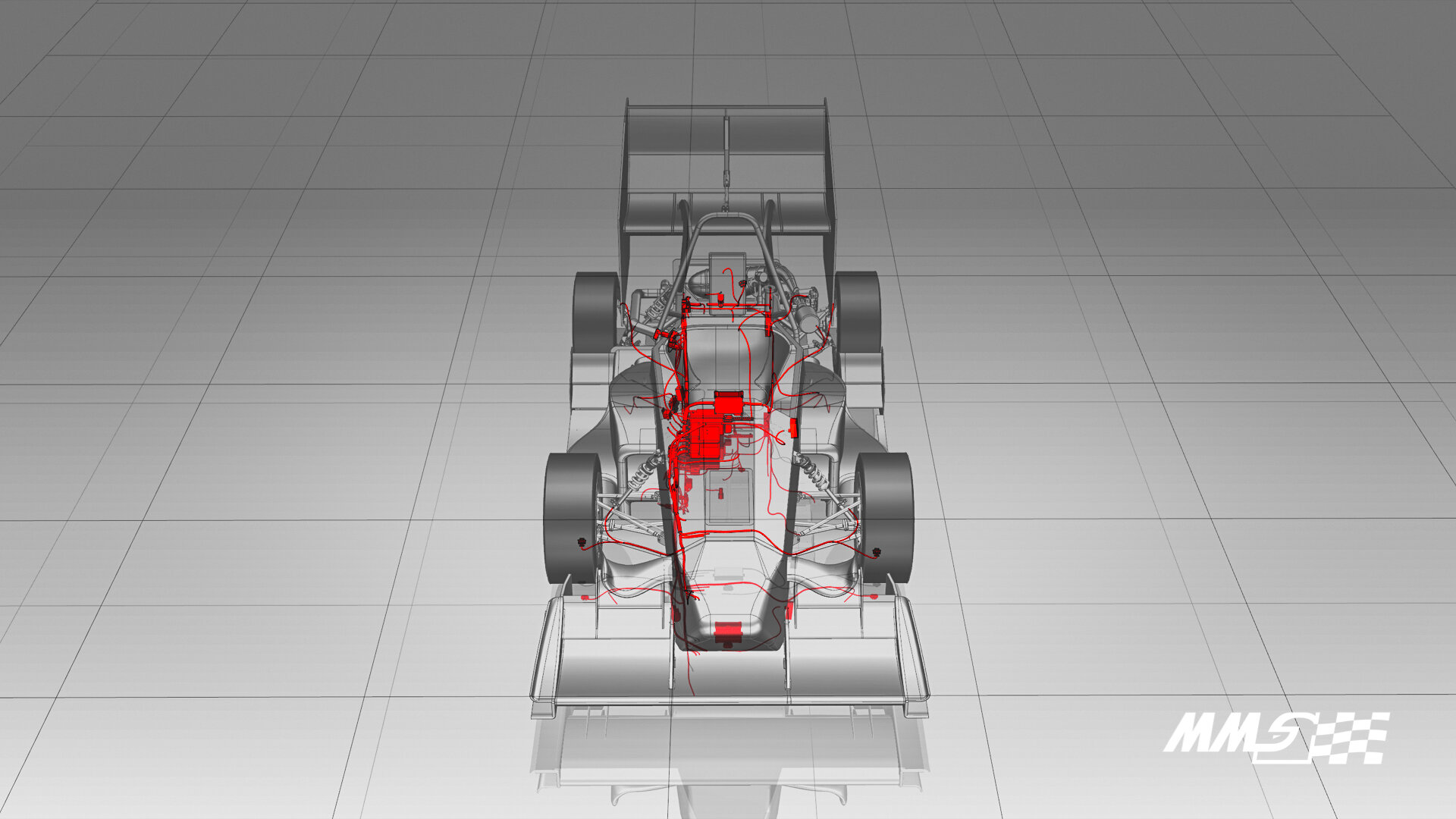Design and Integration of an Electrical System for a Combustion Formula-SAE Race Car, Thejana Abeykoon - 2019
Monash Motorsport Final Year Thesis Collection
The Final Year Thesis, is a technical engineering assignment undertaken by students of Monash University. Monash Motorsport team members often choose to conduct this assignment in conjunction with the team.
These theses have been the cornerstone for much of the team’s success. The purpose of the team releasing the Monash Motorsport Final Year Thesis Collection is to share knowledge and foster progress in the Formula Student and Formula-SAE community.
We ask that you please do not contact the authors or supervisors directly, instead for any related questions please email info@monashmotorsport.com
Summary:
The objective of this project was to follow the design, integration, and manufacture of the electrical systems that will be installed on Monash Motorsport’s latest combustion race car; M19-C. Over the course of semester 1, the groundwork was completed for the development of this system, in preparation for manufacture and installation onto the carbon fiber monocoque chassis.
A thorough LV Systems review and research period in early January saw the selection of the hardware and materials that will be installed onto the car. The selected MoTeC hardware includes the M150 ECU, PDM15, and D153 display. The entirety of the system was then designed on a Computer-Aided Design software (Siemens NX 12) The manufacturing period commenced, which involved the manufacture of the wiring harness and power wiring, and installation onto the chassis.
This project highlighted the importance of meticulous care and attention to detail when designing and manufacturing such a critical system on an FSAE race car.
Introduction:
The LV systems on the car serve the purpose of interconnecting all relevant electronic components required to run the car. This involves communication between the wiring harness, control hardware, sensors, switches, and buttons.
The wiring harness has two main uses;
Distribute power to all hardware and sensors, and
Transmit all sensor signals to a central location (ECU) where it can be logged and the inputs used for logic conditions.
Upon completion of this project, Monash Motorsport should have the documentation required to produce high-quality wiring harnesses and associated electronics for Formula-SAE applications. This includes accurate power budgeting, hardware selection, wiring harness design, correct manufacturing techniques, and training for juniors.
Conclusion:
A well-integrated loom should not have to be taken off the car for servicing once it has been installed. If produced with good manufacturing techniques and outstanding build quality, the LV Systems on the car should be capable of powering and running the car for the entirety of the two-year design cycle (which includes all testing sessions and competitions in both Australia and Europe). From the driving that M19-C has done so far, it is clear to see that the LV Systems is reliable, and is well on its way to achieving this goal. This is a testament to the meticulous care taken by all those involved during the manufacture, and this should be the standard for all looms and associated electronics that Monash Motorsport will produce in the future.

